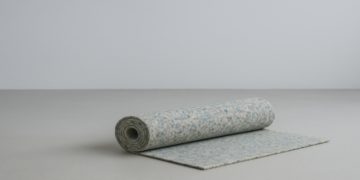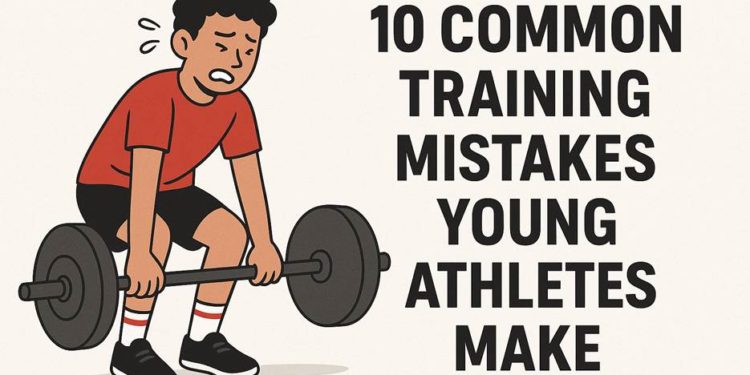Some young athletes get locked into a single sport long before their bodies or interests settle. It looks disciplined from the outside. Parents nod, coaches nod, everyone thinks early focus means future mastery. I’ve never been convinced. The body learns patterns through variety. Strength comes from mixed inputs. Even the best youth training specialist in Utah would probably say the same.
When an athlete repeats the same movements all year, tissues fatigue in predictable ways. Joints complain quietly at first. Later, not so quiet. The fix isn’t complicated. Let kids rotate through different sports or at least different movement skills. Let the ankles feel something other than the same cut step every week. P1 Athlete encourages this kind of variability because it protects long term growth, and honestly, it keeps things fun.
Chasing Exhaustion Instead of Progress
People love feeling wrecked after a session. It feels productive. But training that always ends in near-collapse rarely builds durable athletes. I’ve watched young players slog through drills with sloppy form because the goal seemed to be suffering, not improvement. Strange thing to celebrate.
Progress hides in controlled sessions. Small increments. Clean reps. Not everything needs to feel like a test. Sometimes the smartest fix is dialing back the intensity until technique stabilizes again. It’s a quiet kind of discipline, the type that doesn’t impress the loudest person in the room. But the athlete who trains this way usually lasts longer.
Ignoring Rest
Rest is not an optional luxury. It’s part of the work. Still, young athletes skip it, often proudly. They’ll say recovery is for older players. They’re wrong. Fatigue compounds the same way interest does. It builds and builds until performance dips and no one understands why.
The fix is teaching athletes to value rest the same way they value strong lifts. I’ve seen teams transform once players start treating sleep with the same seriousness as sprints. You’ll hear coaches say rest is free, but that’s not the point. It’s required. Training without recovery is just wear and tear disguised as ambition.
Copying Professional Routines
Kids mimic the pros they watch online. They’ll attempt workouts designed for athletes twice their size, twice their training age. I get it. It’s aspirational. Still doesn’t make it smart. Bodies at fifteen aren’t ready for the routines designed for bodies at twenty-eight.
The fix is grounding training in their stage of development. Keep movements simple. Let coordination ripen before layering complexity. Pros look smooth because they’ve spent years mastering fundamentals. The step most young athletes skip is the unglamorous one. Basics done again and again until they’re nearly boring. That’s where real progress sits.
Poor Technique Under Load
Strength work isn’t the enemy. Bad form is. I’ve seen young athletes load a bar with more confidence than competence. Knees drift. Backs round. No one stops them because they finished the rep. But finishing the rep isn’t proof of doing it well.
A better fix is watching technique with patience. Strip the weight. Rebuild posture. The strongest athletes I’ve coached weren’t the ones who maxed out first. They were the ones who treated every rep like data. Slow lifts. Clean alignment. Then add weight. Not complicated, just disciplined.
Overreliance on Trainers
Strange thing about youth sports today. Some kids get so used to having a trainer watch every move that they stop learning how to train themselves. They lose the ability to notice small errors or adjust a drill on the fly. Not ideal. Athletes need internal awareness, not external babysitting.
The fix is encouraging autonomy. Let kids warm up on their own. Let them troubleshoot mistakes before the coach steps in. This builds a kind of independence that pays off on the field. Even P1 Athlete structures sessions to teach athletes how to think, not just follow instructions.
Neglecting Flexibility and Mobility
Most kids will spend ten minutes smashing through a warm up but ignore mobility entirely. Then they’re surprised when they can’t hit proper sprint mechanics or a full squat. Mobility isn’t glamorous. It feels slow. But without it, everything else suffers.
The fix is integrating short mobility sessions into regular training so they become habitual. Not long sessions. Just enough to keep hips open, ankles responsive, and shoulders moving the way they should. Losing mobility is easier than gaining it back, so it’s worth protecting early.
Playing Through Pain
Every young athlete hears the same line. Push through it. Pain equals toughness. Honestly, this mindset needs to retire. Pain is information. When athletes mute that signal, they trade long term health for short term pride. It’s not even a good bargain.
A better approach is helping kids understand what pain means. Some discomfort is normal. Sharp or consistent pain is not. The fix is early reporting, early modification, early treatment. Athletes hate sitting out. But missing one session is better than losing a season.
Skipping Warm Ups or Rushing Them
Warm ups look optional because they’re not the main event. But bodies don’t shift from idle to full speed without preparation. When athletes skip warm ups, their first few sprints become warm ups anyway. Except they’re risky ones.
The fix is simple. Make warm ups part of the identity of the session. Short, structured, familiar. Not punishment. Just preparation. One coach I worked with used to say the warm up should feel like turning on the lights in a room. Small steps. Then clarity.
Confusing Hard Work With Smart Work
There’s a belief that hard work always wins. Hard work matters, sure. But smart planning usually beats raw effort. Some athletes grind endlessly with no reflection. They double up sessions, then wonder why results stagnate. More isn’t always better. Sometimes it’s just more.
The fix is building a plan that matches the athlete’s age, goals, and actual capacity. Training should feel challenging but purposeful. A well designed plan has rhythm. Hard days followed by quiet ones. Peaks balanced with flats. It takes humility to trust a structured plan, especially when others boast about constant grinding. Yet the athletes who trust that rhythm tend to stay healthier and get stronger with fewer detours.
Final Thought
Young athletes don’t need perfect training. They need training that respects growth, timing, and reality. The mistakes above show up everywhere, even in places with strong coaching. The good news is that each one is fixable once you look closely at what the athlete actually needs. And when they get guidance from people who understand this, sometimes even the best youth training specialist in Utah or programs like P1 Athlete, they develop in a way that feels steady instead of frantic. Steady usually wins.













































































